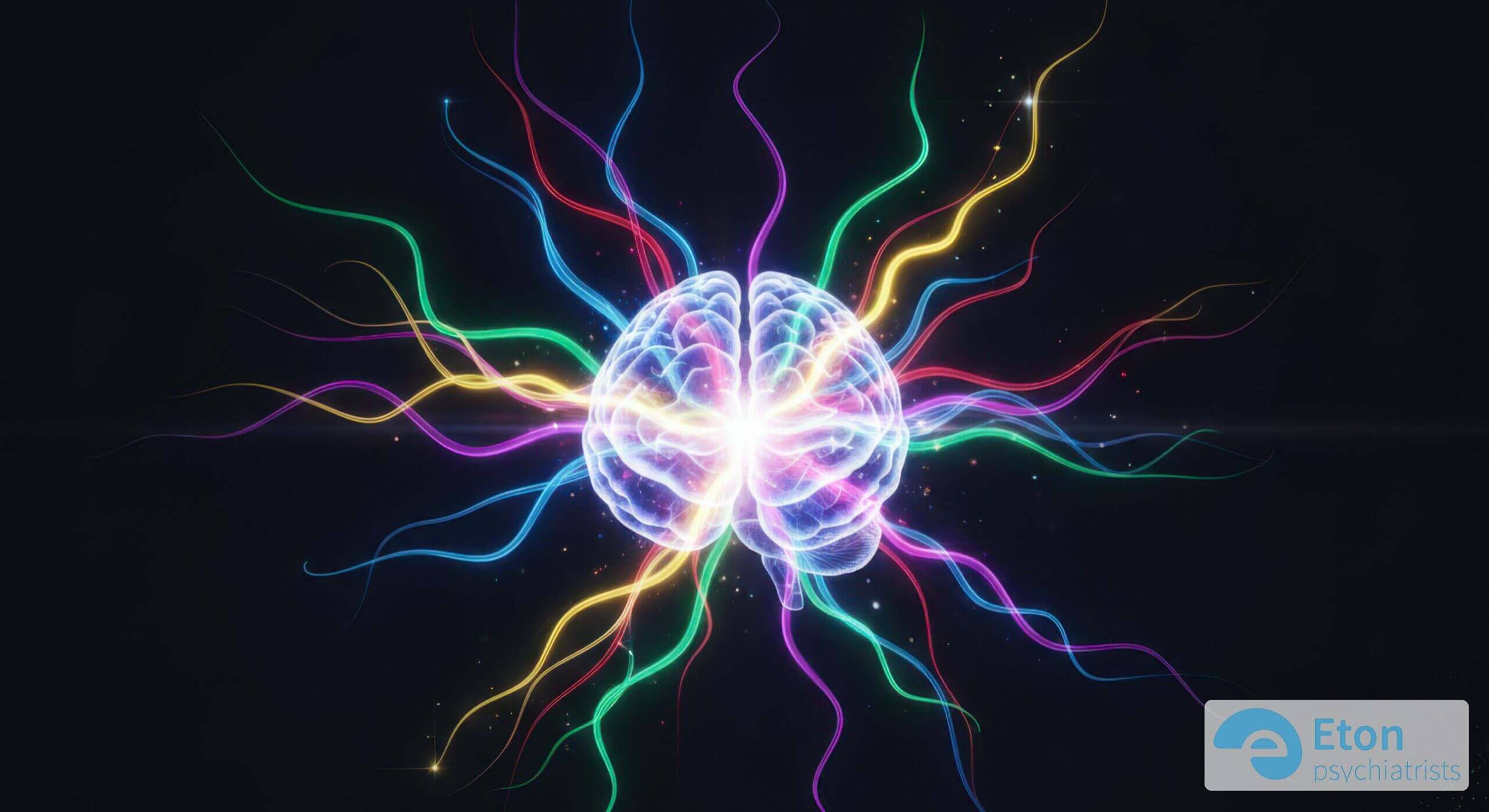
ADHD and Autism: Strengths and Everyday Struggles
Listen to the Article
For those on the go or who prefer listening, you can play the full audio version of this deep dive below.

The conversation surrounding neurodiversity is undergoing a crucial shift. Historically, conditions like ADHD and autism have been viewed primarily through a deficit model, focusing solely on the challenges, impairments, and difficulties individuals face. While these struggles are real and often significant, this perspective overlooks the unique strengths, talents, and perspectives that come with different ways of thinking. Embracing neurodiversity means recognising that these neurological differences are not just disorders, but variations in human cognition that can offer significant advantages. This guide explores the duality of the neurodivergent experience. We will examine the positive aspects of ADHD and the advantages of autism, while also validating the everyday struggles that accompany these strengths. Our goal is to provide a balanced, neurodiversity affirming perspective that celebrates the power of neurodivergent thinking while validating the challenges.
Table of Contents
Embracing Neurodivergent Strengths
Neurodiversity is the concept that neurological differences, including ADHD and autism, are a natural part of human variation. This paradigm encourages us to move away from the idea that there is one “normal” or “correct” way for the brain to function. Instead, it promotes an understanding that different ways of thinking bring unique value to society. Recognising neurodivergent strengths is not about minimising the challenges or disabilities associated with ADHD and autism. The struggles are real and often require significant support and accommodations. However, by focusing solely on the deficits, we miss the opportunity to leverage the unique capabilities that neurodivergent individuals possess. A strengths based approach empowers individuals and fosters a more inclusive society.
The Power of Neurodivergent Thinking
The brains of individuals with ADHD and autism are wired differently, leading to distinct ways of processing information, approaching problems, and perceiving the world. This neurodivergent thinking is often the source of innovation and creativity. While neurotypical individuals may follow linear, established pathways to reach a conclusion, neurodivergent individuals often approach problems from unconventional angles. They may see connections between seemingly unrelated ideas, challenge assumptions, and develop novel solutions. This ability to think outside the established norms is a significant asset in many fields, from technology and science to the creative arts.
The ADHD Advantage
ADHD is often associated with distractibility and impulsivity. However, these same traits, when understood and channeled effectively, can be significant strengths. The ADHD advantage lies in the unique way the ADHD brain engages with the world.
ADHD Creativity and Innovation
Is there a link between ADHD and creativity? Research suggests that there is. The ADHD brain is often characterised by divergent thinking, the ability to generate multiple ideas and solutions to a problem. The racing mind, which can be a challenge during mundane tasks, is often a wellspring of creativity. The impulsivity associated with ADHD can also translate into a willingness to take risks and try new approaches without getting bogged down by overthinking. This spontaneity and cognitive flexibility are key components of innovation. Many successful entrepreneurs and artists attribute their success in part to their ADHD wiring. The positive aspects of ADHD include resilience, high energy levels, and the ability to thrive in dynamic, fast paced environments.
The Phenomenon of ADHD Hyperfocus

One of the most misunderstood aspects of ADHD is attention regulation. It is not a deficit of attention, but a difficulty regulating it. This leads to the phenomenon of ADHD hyperfocus. When engaged in a task that is interesting, novel, or urgent, individuals with ADHD can enter a state of intense concentration, often tuning out the world around them. This ability to deep dive into a subject can lead to high productivity and mastery in a short period. While hyperfocus can be a challenge if not managed (e.g., losing track of time or neglecting other responsibilities), it is a powerful cognitive tool when directed toward meaningful goals. A common misconception relates to ADHD and multitasking. In reality, the ADHD brain often struggles with true multitasking (processing multiple complex tasks simultaneously). What is often perceived as multitasking is actually rapid task switching, driven by the need for stimulation. While this can be inefficient, the ability to quickly adapt and shift focus can be an advantage in crisis situations or environments requiring rapid responsiveness.
The Autistic Advantage
The autistic neurotype is characterised by a distinct cognitive style that offers significant advantages in many areas. The autistic advantage stems from a meticulous, systematic approach to processing information.
Autism, Logic, and Pattern Recognition
A key strength for many autistic individuals is their aptitude for logic and systematic thinking. They often excel at understanding complex systems, identifying underlying rules, and solving problems in a methodical way. This logical approach leads to high levels of accuracy and reliability. Autistic pattern recognition is another significant strength. The autistic brain is often wired to detect patterns, regularities, and anomalies that others might miss. This can manifest as an ability to spot errors in data, understand complex musical structures, or recognise subtle changes in the environment. This skill is invaluable in fields like software development, data analysis, and quality control.
Special Interests and Attention to Detail

Autistic special interests are characterised by a deep, intense passion for specific subjects. This is not just a hobby; it is a profound engagement with a topic that brings joy, regulation, and expertise. This depth of focus often leads to encyclopedic knowledge and mastery in specialised areas. When these interests align with career paths, autistic individuals often excel, bringing unparalleled dedication and expertise to their roles. Autism and attention to detail are closely linked. Many autistic individuals have a heightened ability to focus on fine details, ensuring thoroughness and precision in their work. This meticulousness, combined with their logical approach, makes them highly effective in roles that require accuracy and depth of understanding.
The Reality of Everyday Struggles
It is essential to maintain a balanced perspective. Celebrating the benefits of ADHD and the advantages of autism does not negate the reality of the everyday struggles faced by neurodivergent individuals. Executive dysfunction, sensory sensitivities, social communication differences, and emotional regulation challenges are significant hurdles that often require ongoing support and accommodations.

The strengths of neurodivergence are often most accessible when the environment is supportive and the individual has the tools to manage their challenges. A hyperfocusing ADHD individual still needs strategies to manage time blindness. A detail oriented autistic individual still needs accommodations for sensory overload in the workplace. The goal is to create a world where neurodivergent individuals can leverage their strengths without being penalised for their difficulties.
Why Trust Eton Psychiatrists?
Navigating the world of online health information can be confusing. Eton Psychiatrists is a specialist clinic dedicated to providing expert-led, compassionate care for adults with ADHD and Autism. We understand the complexities of neurodivergence, both online and off. We believe in empowering you with credible, reliable information so you can make the best decisions for your mental health. We adopt a neurodiversity affirming approach that recognises both the strengths and the challenges of our clients, providing holistic support to help them thrive.
Summary
- Neurodiversity Paradigm: Moving beyond the deficit model to recognise that neurological differences like ADHD and autism involve unique strengths and valuable perspectives.
- Divergent Thinking: Neurodivergent individuals often excel at unconventional problem solving and innovation due to their distinct ways of processing information.
- ADHD Strengths: Key strengths include creativity, divergent thinking, resilience, high energy, and the ability to hyperfocus intensely on areas of interest.
- Autistic Strengths: Common strengths include exceptional pattern recognition, logical thinking, attention to detail, and the development of deep expertise through special interests.
- Balanced Perspective: Recognising these strengths is crucial, but it must be balanced with an acknowledgment of the real everyday struggles related to executive function, sensory processing, and social communication.
- Supportive Environments: Neurodivergent strengths are best leveraged when individuals have appropriate support and accommodations to manage their challenges.
Sources
Frequently Asked Questions
Are people with ADHD more creative?
Research suggests a strong link between ADHD and certain aspects of creativity, particularly divergent thinking. This is the ability to generate multiple ideas and approach problems unconventionally. The cognitive flexibility and spontaneity associated with ADHD often contribute to innovative thinking.
What is the difference between ADHD hyperfocus and autistic special interests?
Both involve intense concentration, but the drivers and presentation can differ. ADHD hyperfocus is often triggered by novelty, urgency, or intrinsic interest and can be shorter lived, shifting when the stimulation decreases. Autistic special interests are typically deep, long lasting passions that provide comfort, regulation, and profound expertise in a specific subject area.
How can I leverage my neurodivergent strengths if I am struggling with daily tasks?
The key is to find a balance between managing challenges and leveraging strengths. This often involves seeking appropriate support, such as ADHD coaching or occupational therapy, to develop strategies for executive function and sensory regulation. When these challenges are managed, it frees up cognitive resources to focus on areas where your strengths lie. Requesting accommodations in the workplace or education can also create an environment where you can thrive.
Isn’t focusing on the “advantages” minimising the disability aspect of ADHD and autism?
Acknowledging strengths does not minimise the reality of the disability. ADHD and autism present significant challenges that often require support and accommodations. A strengths based approach simply provides a complete picture, recognising that individuals are not defined solely by their difficulties. It is about empowering individuals by recognising their capabilities alongside their challenges.



